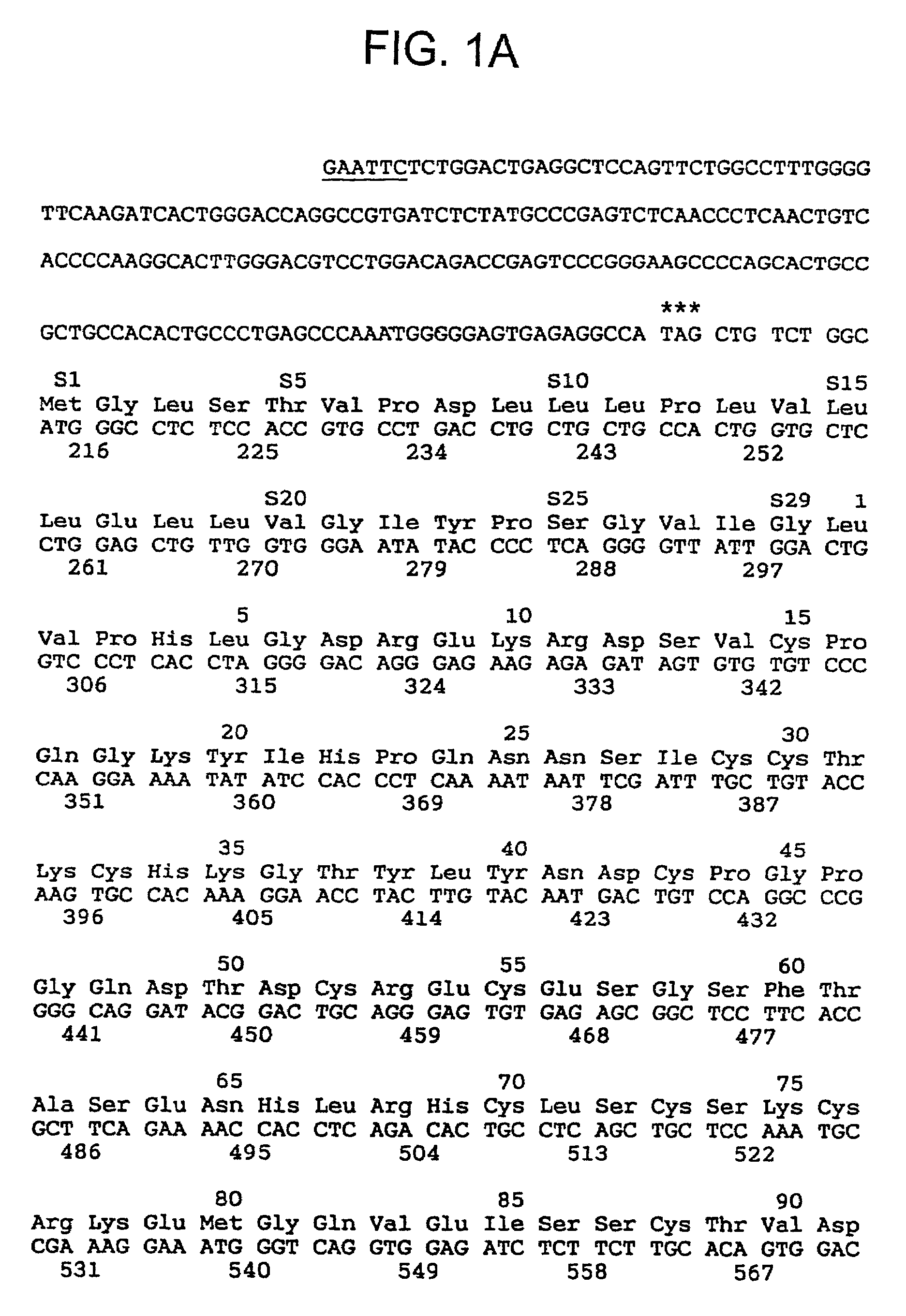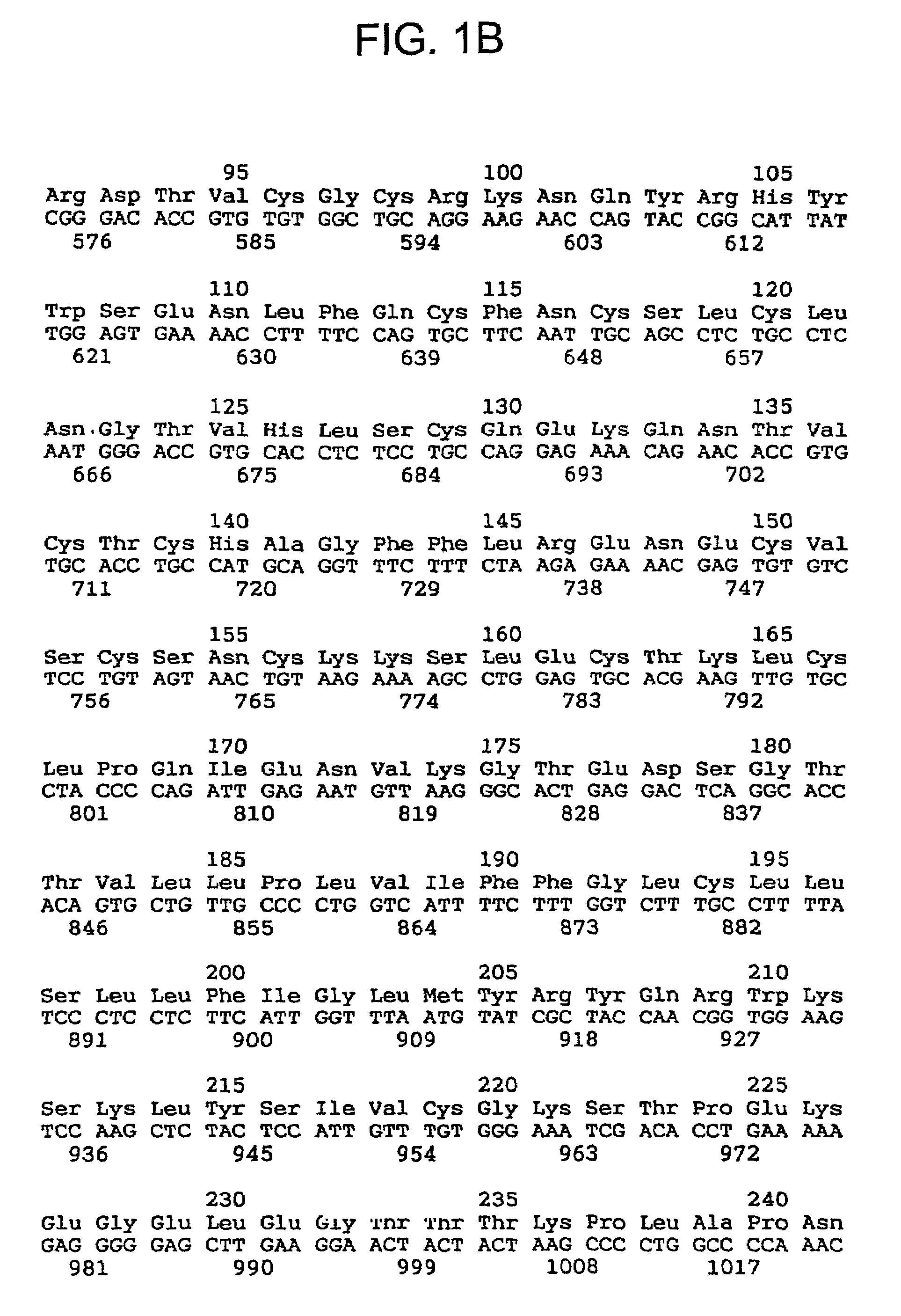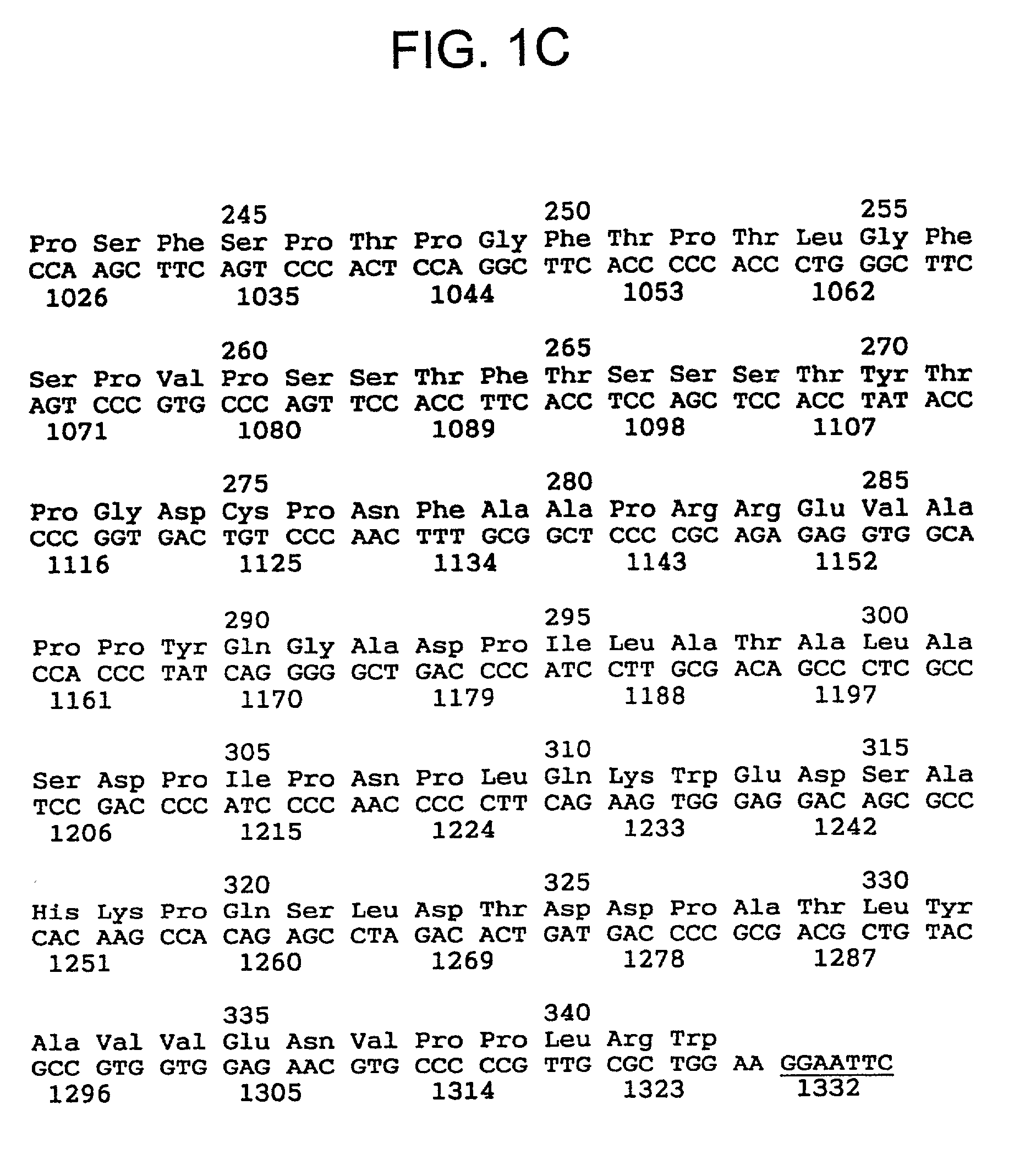TNF binding proteins
- Summary
- Abstract
- Description
- Claims
- Application Information
AI Technical Summary
Benefits of technology
Problems solved by technology
Method used
Image
Examples
example 1
Preparation of Highly Purified TNF-BP
a) Concentration of Urine
[0155]200 liters of dialyzed urine from uraemia patients, stored in flasks containing EDTA (10 g / l), Tris (6 g / l), NaN3 (1 g / l), and benzamidine hydrochloride (1 g / l) and kept in a refrigerator were concentrated by ultrafiltration using a highly permeable haemocapillary filter with an asymmetric hollow fibre membrane (FH 88H, Gambro) down to 4.2 liters with a protein content of 567 g. The concentrated urine was dialyzed against 10 mM / l Tris-HCl, pH 8. During this procedure, as in the following steps (except reverse phase chromatography), 1 mM / l of benzamidine hydrochloride was added in order to counteract proteolytic digestion. Unless otherwise stated, all the subsequent purification steps were carried out at 4° C.
B) Ion Exchange Chromatography
[0156]This step was carried out by charging DEAE Sephacel columns (2.5×40 cm) with samples of concentrated and dialyzed urine containing about 75 g of protein. Elution was carried o...
example 2
SDS Polyacrylamide Gel Electrophoresis (SDS-PAGE)
[0161]SDS-PAGE was carried out using the method of Laemmli (Laemmli, U. K., Nature 227:680–684 (1970)) on flat gels measuring 18 cm long, 16 cm wide, and 1.5 mm thick, with 10 pockets, by means of an LKB 2001 electrophoresis unit. The protein content of the samples from the purification steps c) and d) (preliminary test 1) was determined by Bio-Rad Protein Assay or calculated from the absorption at 280 nm, an absorption of 1.0 being recognized to be equivalent to a content of 1 mg TNF-BP / ml.
[0162]The samples containing about 25 μg of protein (from preliminary test 1c) or about 5 μg (from 1d) in reduced form (≢-mercaptoethanol) and non-reduced form, were applied to a 3% collecting gel and a 5 to 20% linear polyacrylamide gradient gel. Electrophoresis was carried out at 25 mA / gel without cooling. The molecular weight markers used (Pharmacia) were phosphorylase B (MW 94,000), bovine serum albumin (MW 67,000), ovalbumin (MW 43,000), carbo...
example 3
a) Preparation of Samples
[0164]15 μg of the protein purified according to preliminary test 1d) were desalinated using reverse phase HPLC and further purified. To do this a Bakerbond WP C18 column was used (Baker; 4.6×250 mm) and 0.1% trifluoroacetic acid in water (eluant A) or in acetonitrile (eluant B) as the mobile phase. The increase in the gradient was 20 to 68% eluant B in 24 minutes. Detection was carried out in parallel at 214 nm and 280 nm. The fraction containing TNF-BP was collected, dried, and dissolved in 75 μl of 70% formic acid and used directly for the amino acid sequence analysis.
B) Amino Acid Sequence Analysis
[0165]The automatic amino acid sequence analysis was carried out with an Applied Biosystems 477 A liquid phase sequenator by on-line determination of the phenylthiohydantoin derivatives released, using an Applied Biosystems Analyser, Model 120 A PTH. It gave the following N-terminal sequence as the main sequence (about 80% of the quantity of protein): Asp-Ser-V...
PUM
| Property | Measurement | Unit |
|---|---|---|
| Fraction | aaaaa | aaaaa |
| Fraction | aaaaa | aaaaa |
| Fraction | aaaaa | aaaaa |
Abstract
Description
Claims
Application Information
 Login to View More
Login to View More - R&D
- Intellectual Property
- Life Sciences
- Materials
- Tech Scout
- Unparalleled Data Quality
- Higher Quality Content
- 60% Fewer Hallucinations
Browse by: Latest US Patents, China's latest patents, Technical Efficacy Thesaurus, Application Domain, Technology Topic, Popular Technical Reports.
© 2025 PatSnap. All rights reserved.Legal|Privacy policy|Modern Slavery Act Transparency Statement|Sitemap|About US| Contact US: help@patsnap.com



